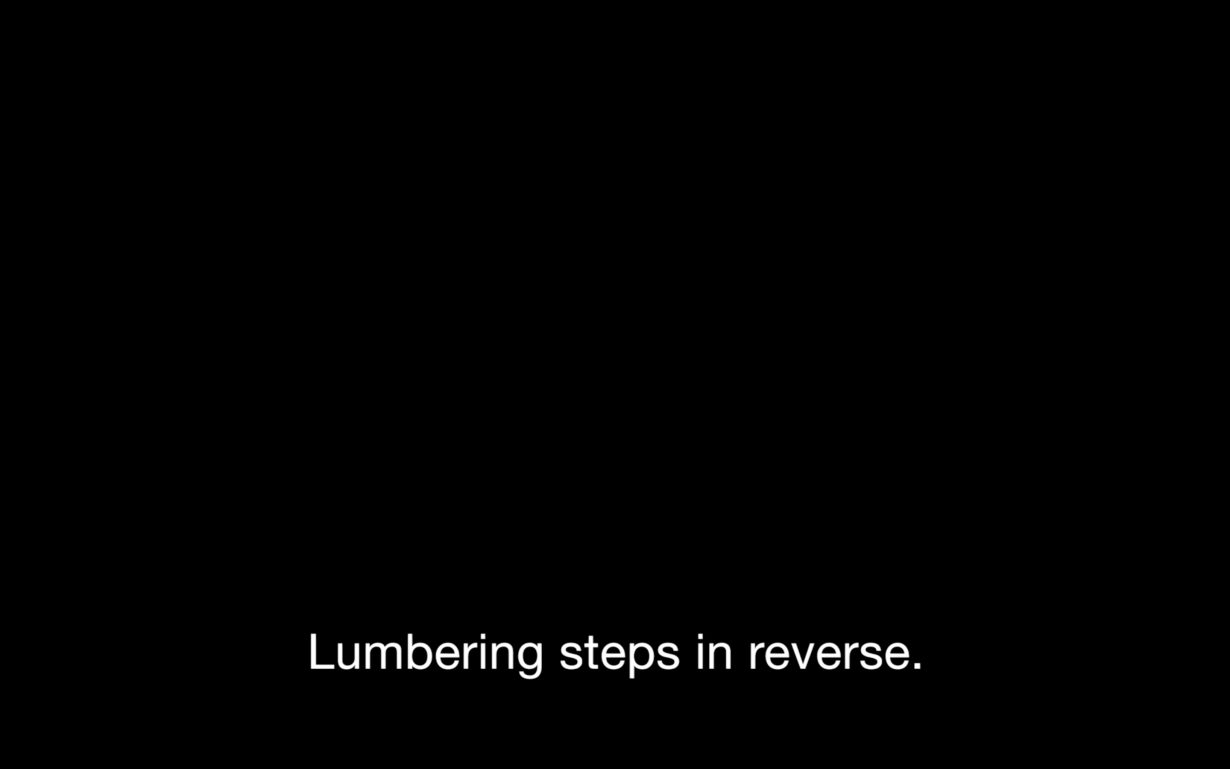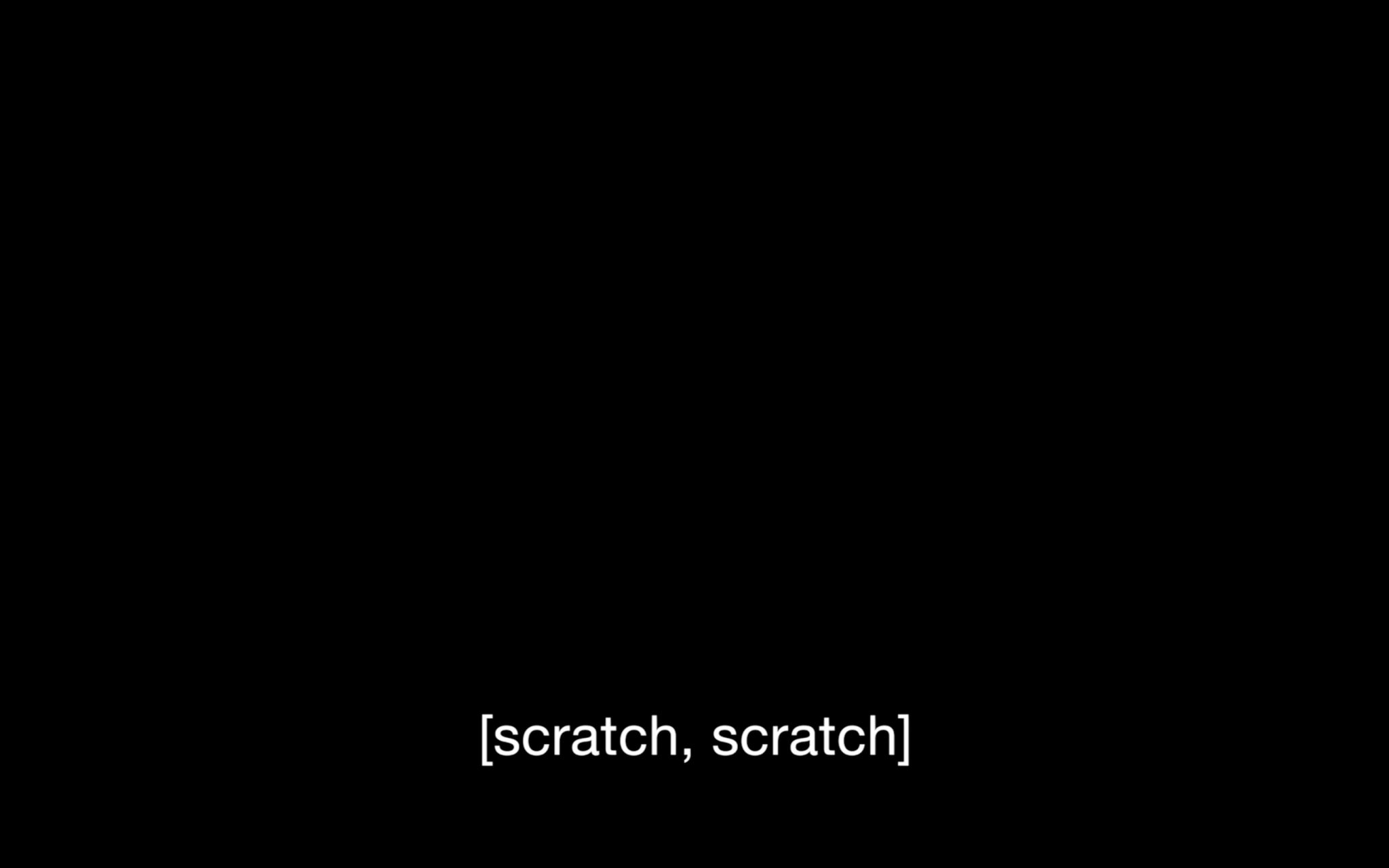Long Take at ICA Philadelphia critiques how standard tools of access, such as subtitles, necessarily reduce a work of art
While described as three individual artworks, Carolyn Lazard’s exhibition Long Take reads most convincingly as one cohesive installation. The gallery intervention, Surround Sound (2022), suggests a space of both rehearsal and performance: dark vinyl lines the floor, spotlit like a black-box theatre. In Leans, Reverses (2022), measured breath and the thud of feet landing on earth play from a grid of speakers suspended from the ceiling, while at the centre of the room a cushioned bench, Institutional Seat (2022), sits before a line of three dark television monitors. We listen to dancer Jerron Herman perform as, simultaneously, we hear poet Joselia Rebekah Hughes’s translation of his movement into spoken word, Hughes’s speech itself captioned on the otherwise black screens at the middle of the gallery. The language is creative and poetic – an attempt to write a body in motion. The spoken words blend with the rhythm of the dancer’s exertion, with sound and language both offering fresh avenues to access the unseen dance at the centre of the exhibition.
Lazard developed Long Take in the intellectual shadow of dance for camera. Popular in modern dance circles of the 1960s and 1970s, these dance films became a way to record and archive performances, in the process reimagining how choreography might prioritise the cinematic frame. The result was something of a new form, rooted in performance but altered for film and made to combat the fleeting nature of dance – to make it accessible across time and through history. Conceptually, Lazard connects dance for camera to a call for better access policies in art institutions. Lazard’s view of what constitutes access is sweeping, ranging from physical accommodations to ensuring the closed captioning of video, to the more cerebral political project that sees access as an instrument of collective care. In Long Take Lazard invokes dance for camera to critique how standard tools of access, such as subtitles, necessarily reduce a work of art to description and in the process deny viewers the meaningful ambiguity of an artwork. Lazard hopes to propose an alternative: that access might become about true translation, the kind that allows for gaps, misunderstandings and, perhaps most crucially, the persistence of the untranslatable. Dance for camera was in many ways a rearticulation of choreography; Lazard transfers this idea to access policies, pitching for a method of reformulating artworks to and for various audiences rather than merely transcribing them, a process Lazard sees as necessarily reductive.

Lazard’s interdisciplinary practice has historically been grounded in generative critiques of institutions’ failure to be accessible, addressing the politics of chronic illness and calling for better awareness around possibilities for accommodating disabled audiences. In A Recipe for Disaster (2018), for example, Lazard appropriated an episode of Julia Child’s television show The French Chef (1963–73), overlaying footage of Child making an omelette with a manifestolike text calling for artworks designed for ‘the possibility of an integrated audience’. Read aloud over the video’s original sound and briefly interrupting the track of audio description, the text scrolls upward in yellow type, competing with the subtitles. Part directive, part polemic, the work is unflinchingly precise in its demands. A Recipe for Disaster liberates the definition of access from its traditional constraints, calling for a rethink of how access can be granted and how it can be integrated into a work of art from the piece’s conception. Lazard’s interest in dance for camera seems naturally to evolve from these inquiries. But in Long Take, the form fails the concepts, and the exhibition itself falls short of conveying the solidity of Lazard’s ideas. The works ultimately speak only to the inadequacy of description rather than expanding to address how the complexity of an artwork might be salvaged through its rearticulation. With its emphasis on the unseen performance thrice translated, the focus is too much on the practicalities of remediation, obfuscating Lazard’s theoretical framework. The original conceit, that the opacity of an artwork is sacred, gets lost, and dance for camera – the conceptual hinge of the entire show – is only externally cited as an inspiration. Without it, the looping translation of sounds to words to sound again of Leans, Reverses becomes a work more about the process than its potential. And though this could be seen as intentional, forcing us to contend with all that is lost in translation, it would also make Long Take impossibly didactic, undercutting Lazard’s inquiries into how form can be renegotiated to accommodate.
Long Take at ICA Philadelphia, through 9 July
